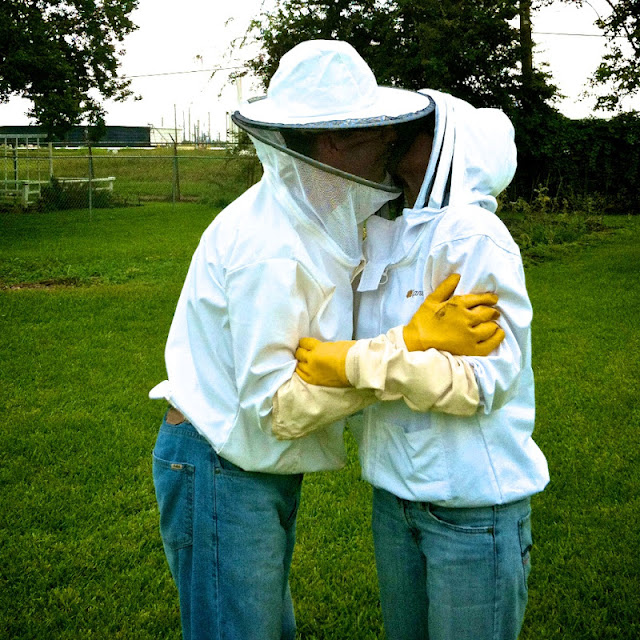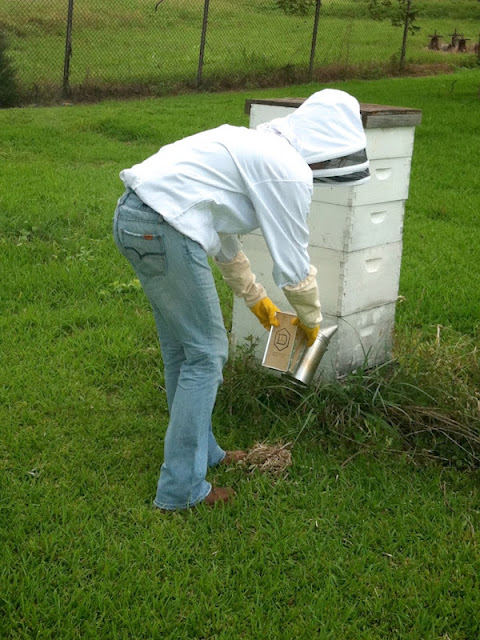Bees After All
Along time ago, when I started this blog, I bought a beehive. I put my supers together, painted them, bought an extractor, and waited for all of that raw honey. Aside from the DIY appeal of having a beehive, wasn’t having bees and an organic garden doing the world a service. I mean who hasn’t seen The Vanishing of the Bees free on Netflix?

But within a few months, and many passes of the mosquito control plane over our home, our hive really seemed to be vanishing. I didn’t open it up and check on it as much as I could have because it was hard to lift the hive body by myself and my husband gets home late most days and …blah… blah ….blah….I’m a bee murderer.
Every time we looked, they appeared weaker and I doubted my decision to keep bees naturally. Eventually we found some kind of beetle taking over the hive and followed the advice of a Dadant rep who suggested we wait until they were all gone, hose the hive and frames down at a car wash, and start over. So I waited.

For a few months I walked guiltily past the hive. I was ashamed of the lack of activity because I thought I probably did something wrong to hurt them. (My family teases me for once, as a little girl, wanting my grandfather to let a tree roach he found in the house go free on the road.) However, after a few months, the movement around the hive seemed to pick up. We weren’t getting extra honey in the supers, but the hive wasn’t abandoned or dead. So, we let them do their thing. I don’t know if they bounced back or if a new swarm moved in.
Then, a week ago, it hit me: summer is almost over and this hive has to have filled our supers this year and if so we have to harvest now! I called my husband, re-read everything I had once learned about extracting honey, and the next day, after church, the harvesting commenced.
Fortunately, we had an extractor that we’d bought when we first had dreams of beekeeping. This, a smoker, and a 5 gallon bucket were our only proper harvesting tools. A dear friend of ours showed up with his camera to commemorate what would either be our first harvest or an Attack of the Killer Bees re-enactment.
First, we smoked them.

Then we started removing the supers from the top.
The most red neck moment of this venture came when my husband used a leaf blower to shoo them out of the super frames. Sorry, no photos.
We worked with one super at a time, bringing the frames inside to extract at our high tech extraction station – the kitchen table.
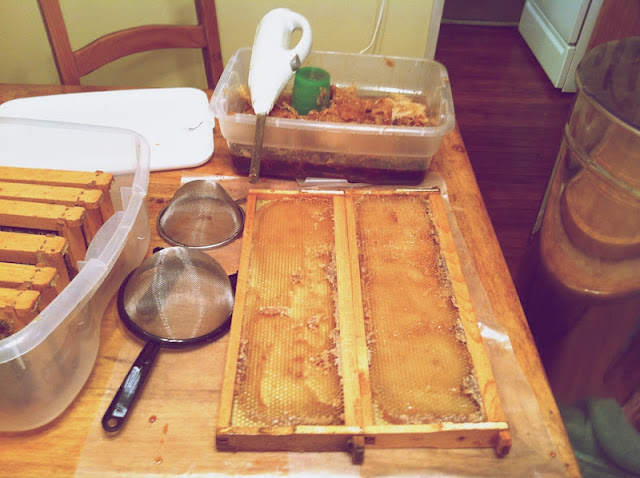
I used a hand-me-down electric knife from Thanksgivings past to cut the wax seal off of the honeycomb on each side of the frames.
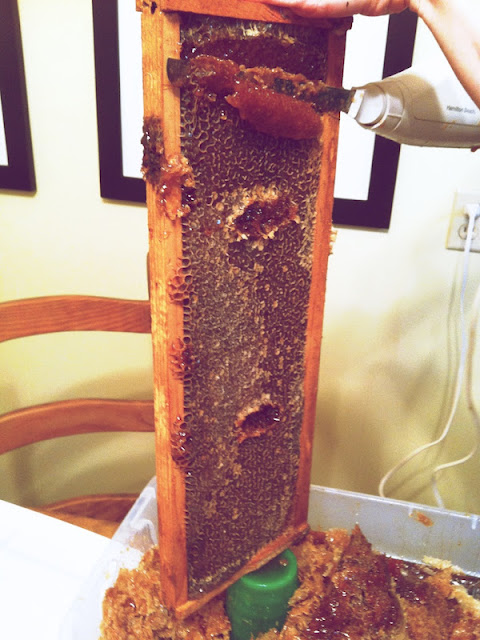
I did it over a plastic tub to catch the beeswax for later projects.

They were then placed in the extractor, two at a time, then we cranked it for one minute before turning each frame around and extracting the other side.
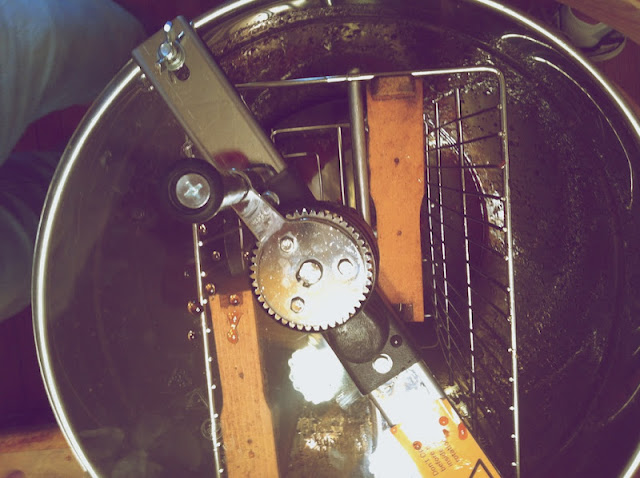
When the honey in the bottom of the extractor began to rise to the bottom of the frame baskets, we would drain it into a clean bucket, holding a strainer up to the spigot.

When we got to the bottom super, we decided to leave several frames worth of honey because we were doing this later than normal and wanted to leave plenty for the bees; plus, we were out of storage containers. That decision left us with about 7 gallons of honey.
After filling the buckets and large jars, we let it sit for a couple of days for air bubbles and impurities to rise to the surface.

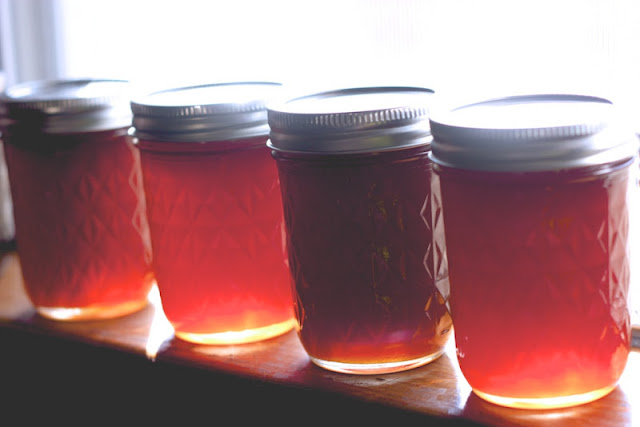

I skimmed these away with a spoon and filled our jars. This honey seems really dark and has a slightly syrup-y taste. But it’s really good. I read that older honey (what we had in our bottom super from a year before) has darker comb, that might have once held brood but has been cleaned out and used to store honey, is thought to have more health benefits. Huh.
I’m not such a bee murderer after all. Ah, happy endings.
